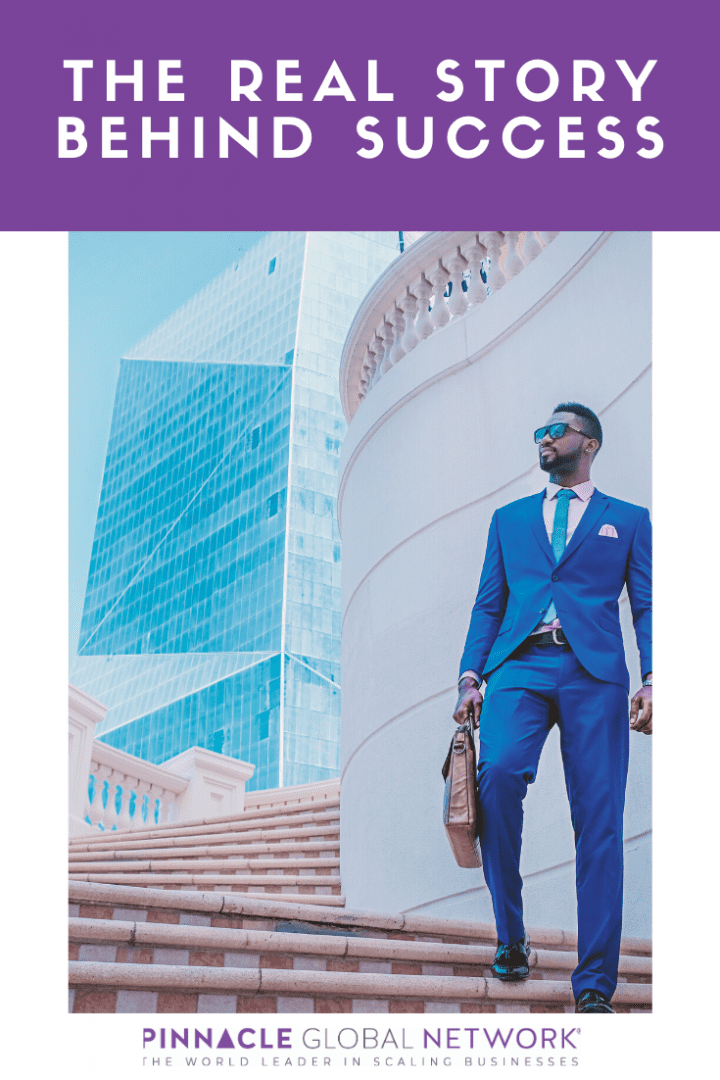The Real Story Behind Success
When looking at the most successful people and organizations, we often imagine geniuses with a smooth journey straight to the promised land. Yet when you examine nearly every success story, they are often filled with crushing defeats, near-death experiences, and countless setbacks. But don’t let that get you down!
 Before Success
Before Success
Often times, we celebrate companies and individuals once they’ve achieved undeniable success, but shun their disruptive thinking before reaching such a pinnacle. Before Oprah was Oprah, before Jobs was Jobs, they were labeled as misguided dreamers rather than future captains of industry.
In your life, you’ve probably had a setback or two. When you stumble, it’s tempting the throw in the towel and accept defeat. The most successful people forge ahead regardless of the falls and disappointments. Their mistakes often make them more determined and more passioned for the win.
WD-40 lubricant got its name because the first 39 experiments failed. WD-40 literally stands for “Water Displacement–40th Attempt.” If they gave up early like so many people do, we’d sure have a lot more squeaky hinges in the world.
The Story Behind Success
Today Disney rakes in billions from merchandise, movies and theme parks around the world, but Walt Disney himself had a rough start. He was fired by a newspaper editor because, “he lacked imagination and had no good ideas.” After that, Disney started a number of businesses that didn’t last long and ended with bankruptcy and failure. He refused to give up until he nailed his recipe for success.
Don’t cave to your mistakes, embrace them. In fact, mistakes are our windows to discovery. There’s an old saying that “every bull’s-eye is the result of a hundred misses.” So the next time you feel the sting of failure, just realize you’re likely one shot closer to hitting your target.
You have a mission and a dream.
You were born with gifts like no other. Your mission in life is to be “You”, to the fullest. You will inevitably endure some falls along your journey, but you must realize that persistence, heart and determination are the most crucial ingredients towards success.
Ready to take your business to new heights?
You need goals. Big ones. Get Your FREE Big Vision Roadmap and get ready to scale your company like never before. If you are ready to stretch yourself and look at your business in a new way, we have the only video training that you need.
How Does the CEO Coaching Process Work?
Leaders, entrepreneurs and CEOs who want to get more out of themselves and their businesses can benefit from the CEO coaching process. After all, the story of success doesn’t often cover what’s behind the success, and that can give you a distorted view of what it takes to reach the next level. The good thing is that CEO coaching can bring about real success stories driven by proven techniques that help build core leadership competencies.
While most leaders understand that mentors can be a crucial piece of the leadership puzzle, some may wonder why a CEO may need a coach. Here are the steps that most CEO coaching processes utilize to bring about real and effective change.
- Assessment. In this first step of the CEO coaching process, leaders are encouraged to look inward to identify certain leadership opportunities. A survey of some sort is common, and subordinates and other colleagues may be invited to participate. Alternatively, a Q-and-A session or some kind of one-on-one may be a better fit.
- Prescription. The next step in the CEO coaching process is to develop a prescription or a set of actions to focus on. After meeting with a coach, a leader will receive instructions as to how they can improve their skills, whether that’s communicating more effectively or collaborating more with others.
- Experiment. Once a prescription has been developed and shared, the CEO coaching process moves into the next phase. At this point, leadership experiments are designed, which are intended to determine how to surmount challenges and other conflicts. The controlled environment allows a coach to observe a response in real time.
- Reflect. After the experiment has been completed, the next step in the CEO coaching process is to assimilate information and encourage a deeper understanding of what transpired and what insights can be derived from the process. These can be integrated into the normal day-to-day, as well as any future challenges.
If you’re a leader that wants to improve your skills and your approach to business, our CEO coaching process can help. Contact us today to get started.
